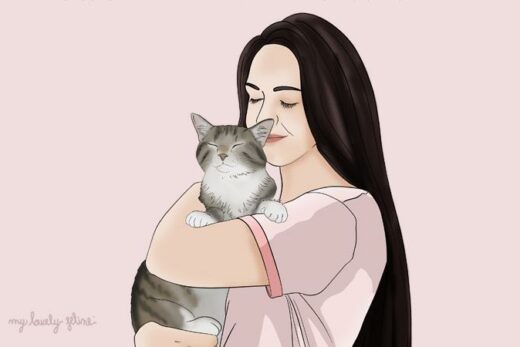Like people, cats are susceptible to a health condition known as diabetes. Roughly one hundred million people have diabetes, and that’s in the United States alone. There are various situations that cause diabetes in the body, but for now, we are going to focus more on how diabetes affects cats and how you should go about helping a cat with diabetes.
Diabetes in cats is not as uncommon as you may think. In fact, approximately 2% of all cats have diabetes. The percentage is small but when you think about it, there are roughly six hundred million cats in the world, which equates to an estimated twelve million cats that have diabetes. When put into perspective, it is easier to realize that 2% of cats with diabetes is an insanely high number of cats.
But what exactly is diabetes? And how does it impact the lives of cats that have the condition? Let’s define diabetes in cats, and then we’ll talk about the implications and symptoms of feline diabetes.
TABLE OF CONTENTS
1. The Definition of Diabetes in Cats
2. The Two Types of Feline Diabetes
3. Symptoms of Diabetes in Cats
4. How to Tell If Your Cat Has Diabetes
5. Treating Diabetes in Felines
6. Where to Purchase Feline CBD
The Definition of Diabetes in Cats
Diabetes is defined by the Centers for Disease Control and Prevention as a health condition denoted by improper processing and use of insulin in the body. Insulin is a main component of carbohydrates, and it is completely natural to consume a decent amount of insulin on a daily basis.
But the problem arises when the body does not take insulin and store it in the appropriate place. In the body, insulin is derived from the pancreas, which is an internal organ situated very close to the stomach. The pancreas produces insulin at normal and regulated rates in the bodies of healthy cats, but sometimes, the body struggles to produce insulin on its own.
Other times, the body has a hard time regulating insulin that comes from food sources. The latter two examples are indicative of type I and type II diabetes, respectively. When your body improperly regulates insulin, there is an absurd concentration of sugar in the bloodstream, and this leads to an imbalance in the blood sugar levels in your cat’s body.
Sometimes diabetes arises from variables in the environment, like a virus that is circulating and causing damage to the beta cells that produce insulin in the bodies of cats. Other times, diabetes has nothing to do with external factors, but rather, the diabetes stems from their genetic makeup.
This is probably the most unfortunate way of developing diabetes because there aren’t any preventative measures that you can take. Not all cats with genes that lead to diabetes actually develop the health condition if the genes are not triggered or if they are recessive to the point of staying benign. No matter what causes diabetes, the most important part is to be proactive and learn about how to move on from there.
Your cat can still lead a fulfilling and active life while being diabetic, especially if you do your very best as a pet owner and help your feline friend stay as healthy as possible!
The Two Types of Feline Diabetes
Diabetes has everything to do with the levels of insulin that your dog does — or does not — produce on its own. Insulin is a naturally-occurring hormone in the body and it enables the body to break down carbohydrates.
Often shortened to carbs, carbohydrates are the main source of energy for any moving body. While a select few are able to survive off of a low-carb, high-fat nutrition intake, the majority of people and animals thrive best when more carbohydrates than fats are being consumed.
But this can be dangerous for some cats when their bodies are either receiving too many carbohydrates for comfort, or when the carbohydrate count is fine but the insulin levels are not adequate enough to compensate for the amount of sugar entering the body. Situations like this are examples of diabetes.
For people and cats alike, diabetes presents itself in two ways. Diabetes is categorized in two ways, and the diagnosis is based on how your cat’s body relates to the insulin pumping all throughout. Once diagnosed with diabetes, your cat will either be categorized as Type I or Type II.
The differences between Type I and Type II is related to the severity of the condition. For cats with diabetes, Type I is far worse than Type II. The main cause of Type I diabetes is that your cat’s body is not receiving enough insulin, and subsequently, your cat’s body is low on sugar.
While it is important that you regulate your cat’s sugar intake, there is a happy medium that your cat’s body needs to maintain. Without enough sugar, your cat will feel lightheaded, shaky, and not at his or her normal energy levels. Your cat’s vet will recommend that insulin shots become part of your cat’s daily routine, and the shots will bring your cat’s insulin levels back up over time.
Symptoms of Diabetes in Cats
Diabetes is often present before you are even aware that it’s a problem. The symptoms of cat diabetes stay dormant and relatively undetectable for a little while, but when they do start to surface.





